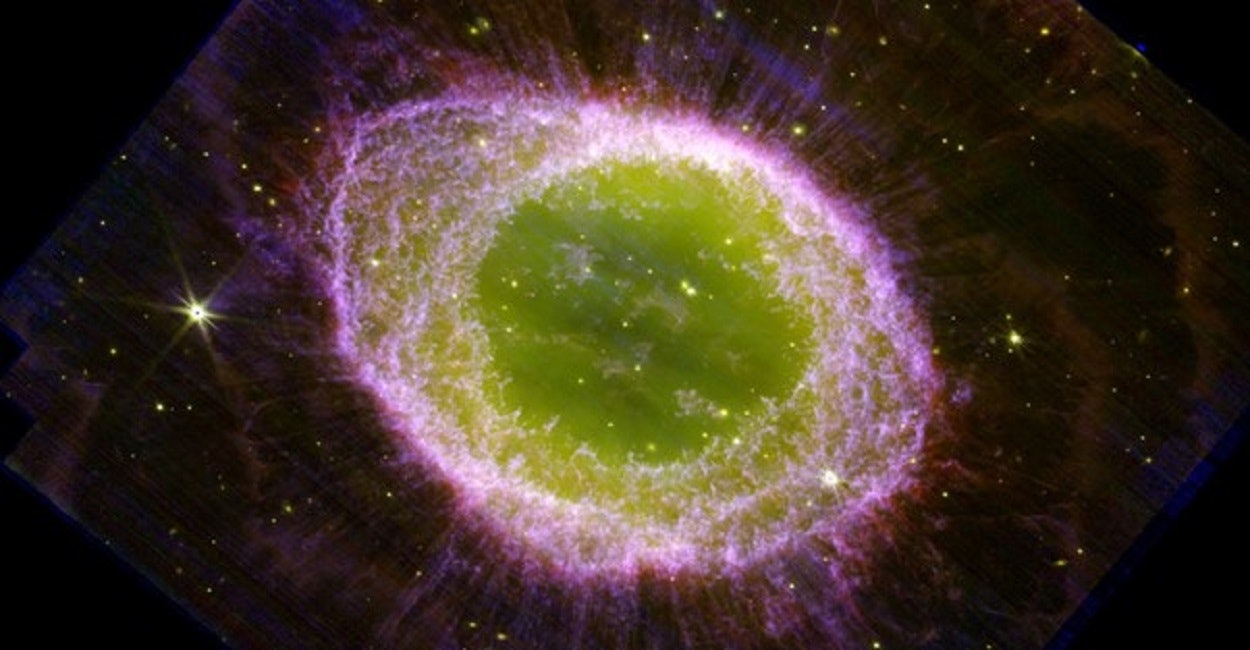
Four thousand years ago, while ancient Egyptian laborers were building the Great Pyramid, a star 2,600 light years away shook off its outer layers and exhaled them out into space with its dying breath.
The slowly-cooling core of that dying star now sits at the center of an expanding ring of gas called the Ring Nebula, also known as Messier 57. The Hubble Space Telescope originally captured the same nebula in 1999 — but that image, while iconic, was a little fuzzy. New images from the James Webb Space Telescope reveal more details of the inner region of hot gas that still surrounds the dead stellar core. This new data could shed light on the afterlives of smallish stars like our Sun, whose final breaths seed the rest of the galaxy with ingredients for new stars and planets.
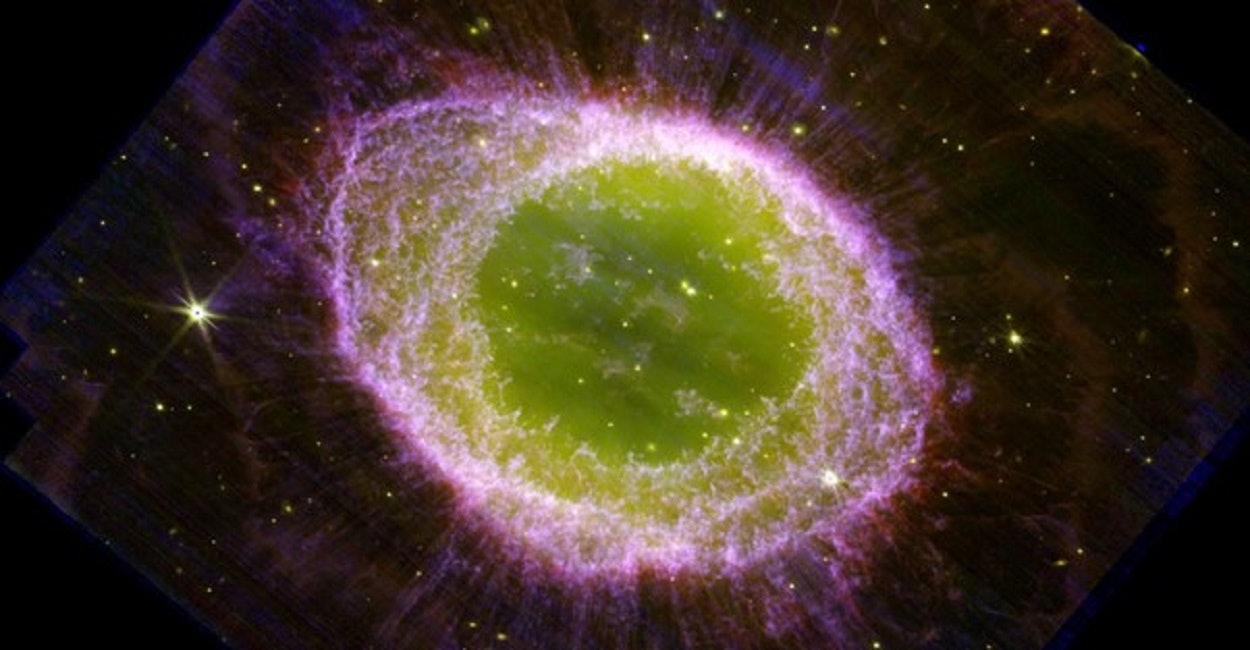
Tour the Ring Nebula
"We are witnessing the final chapters of a star's life, a preview of the Sun’s distant future, so to speak," says University of Manchester astronomer Mike Barlow, lead scientist of the JWST Ring Nebula Project, in a recent statement. "We can use the Ring Nebula as our laboratory to study how planetary nebulae form and evolve."
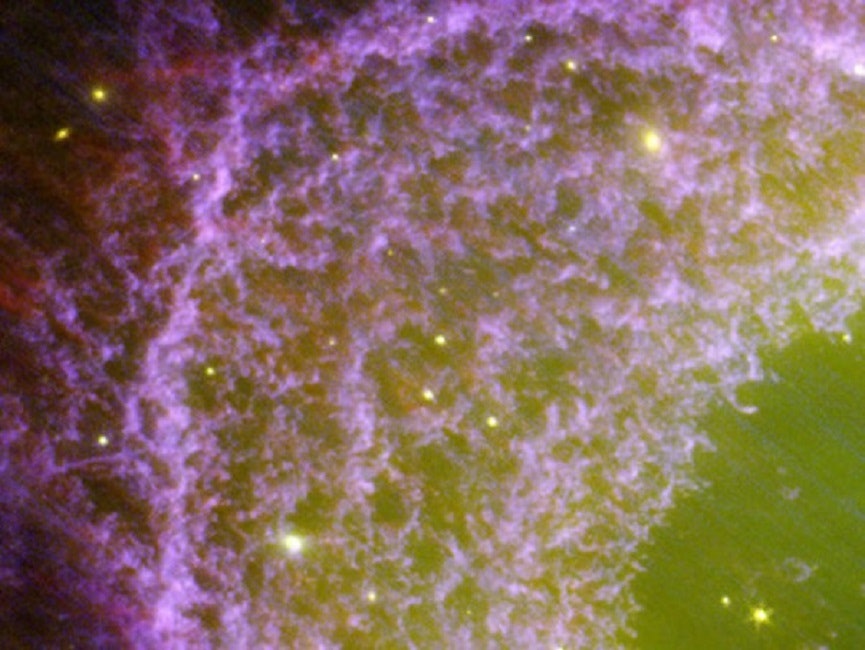
Most of the Ring Nebula is made up of hydrogen gas, which has cooled enough for its atoms to stick together to form hydrogen molecules. The gas has started clumping together in denser patches, giving the ring its intricate texture. That clumpy hydrogen makes up about half the gas in the ring nebula.
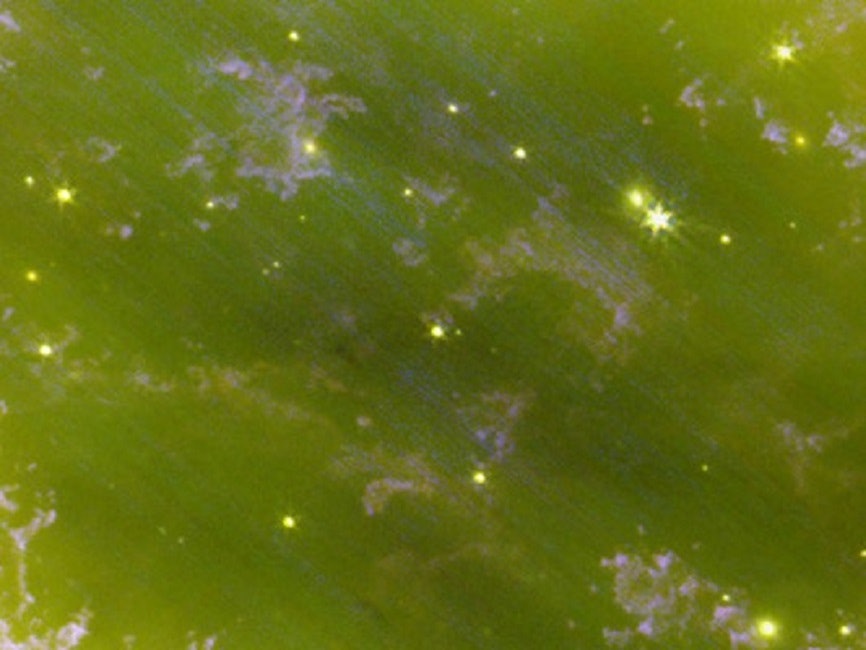
Inside the ring, the translucent green region is much hotter, much less dense hydrogen gas, which is still soaking up heat from the blazing, exposed core of the dead star. Even though the star has been dead — no longer fusing hydrogen into helium in its core — for a few thousand years, what’s left behind is still a scorching 180,000 degrees Fahrenheit. This dense remnant of a star is called a white dwarf, and it’s the brightest star in the center of the Ring Nebula.
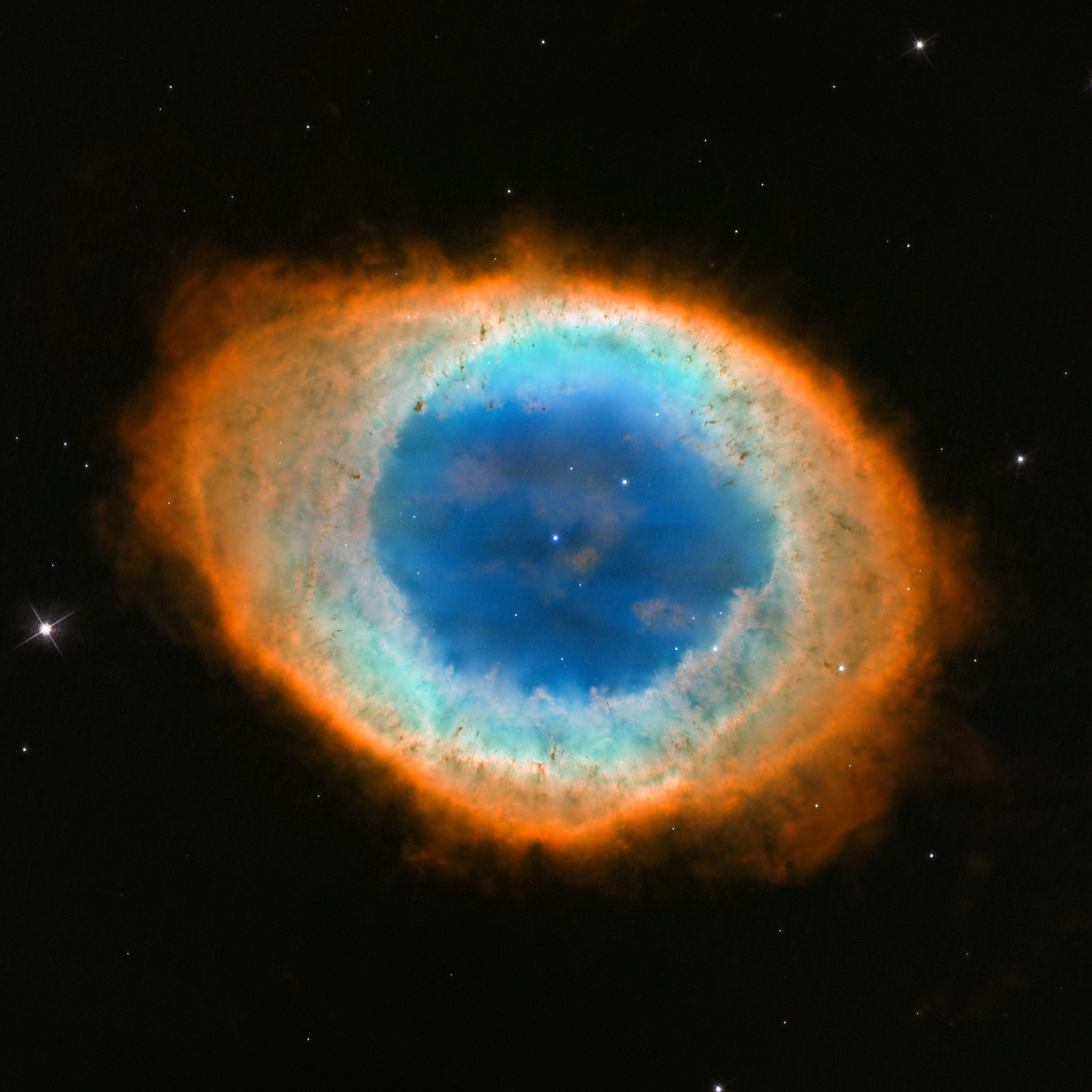
Hubble last looked at the Ring Nebula in 2013, seen in the above image. A decade later, JWST’s higher-resolution instruments capture an even more detailed view of the nebula. But because Hubble and JWST see the universe in different wavelengths of light, astronomers will need to rely on both in order to fully understand how the Ring Nebula has evolved over the last few millennia.







